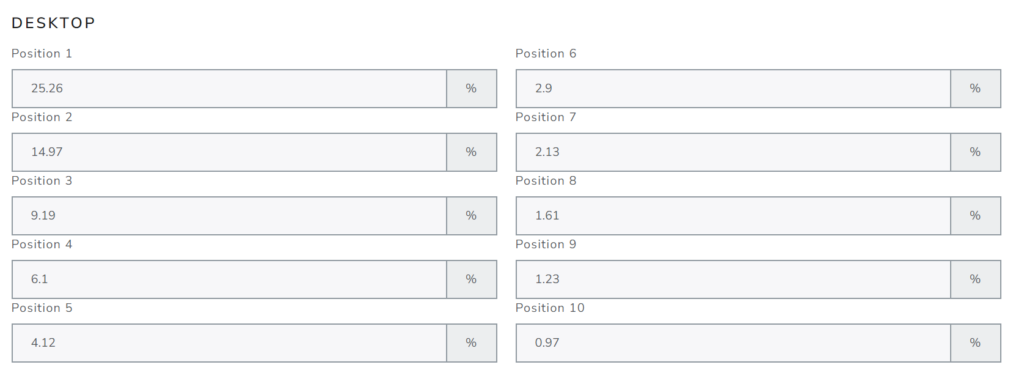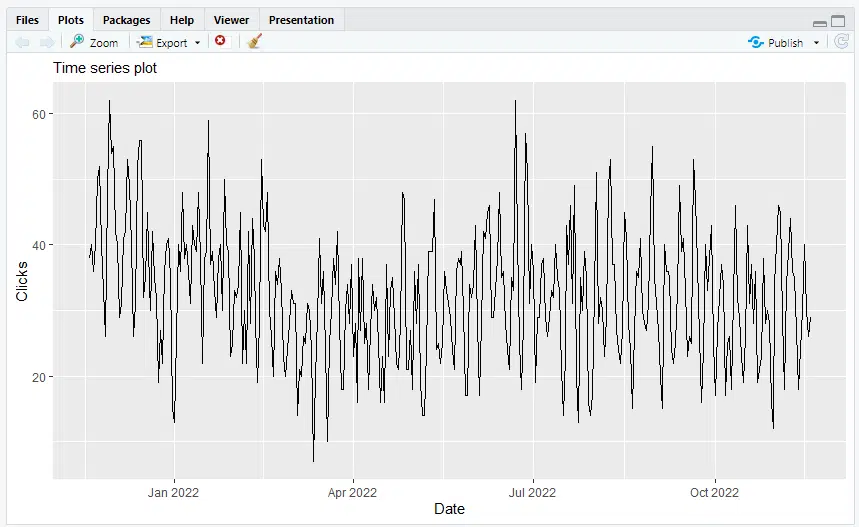This isn’t a simple topic. While PPC you can generally model results fairly easily if you have all the minor data points of budget, CPC and conversion rates making PPC ROAS and ROI calculations straightforward. However, getting traffic from search engines and converting it to revenue is more complicated, and multiple “wrinkles” and subtopics that complicate this aspect of digital marketing.
This is a living guidepost and masterclass that will be growing over time to lead you through the various sub-topics you’ll need to understand to be able to predict potential SEO ROI for your particular business, niche or industry. The largest part of the whole process is understanding exactly what is a guess, what is best practice, what is “unknowable” and when a “best guess” really becomes as actionable as a hard metric.
Essential SEO Forecast Reading:
Webinars & Video Tutorials On Proper SEO Forecasting

Templates & Documents To Assist Your Forecasting
Copy SEO Forecast Template for Google Sheets
Copy SEO Forecast Template for Excel
Example Forecast Workflow
- Google Sheet SEO Forecast Workflow Template
- Excel Workflow Template
- Example SEO Forecast Walk-Thru PDF
First determine if your site needs to determine topical content or terms and phrases for your main products or services. You want to prioritize doing forecasts for your main relevant terms for services and products first, and THEN explore your potentially relevant topics for a bigger content marketing strategy.
Speak to customers and your team for keywords
Your basic forecast process will need to be narrow to start, and expand outward. It’s very useful to speak to several people in various positions, depending on the scale/scope/size of your business/brand/organization.
- If possible talk to potential, current and past customers about how they searched for your product or service.
- Ask your customer support team how people usually refer to your product or service
- Ask about most common “friction” points that keep people from buying or make them unhappy afterward
- Speak to your Sales team, front desk, receptionist who has that “first contact” with potential clients
- What problem are they really trying to solve with your product or service
- What are their biggest challenges/objections to overcome
- Who are the competitors they reference, and what is it about them that is attractive
- Speak to marketing and product managers who are looking at making new products or services
- Why did the choice to produce these new offerings
- How do they compare or differ from previous iterations/products/services
- Speak to leadership, CEO, CFO, CMO and get overall marketing values
- Are you a luxury brand, the cheap alternative
- Are there audiences they think should be targetted or avoided?
- What are legal or brand innapropriate “negative SEO keywords” you must avoid
Built an initial keyword list & then expand it
With this information in mind, start targetting one product or service at a time for your forecasting. The second task is now to gather a list of relevant keywords. You can do this seo process by hand, or use a clustering keyword tool to do the heavy lifting.
- Include the terms and phrases you heard over and over in those conversations with your company & clients.
- Do a keyword GAP analysis for companies offering the same product/service
- Input keyword into Google, get the top 10 urls ranking now, then get top 100 keywords those pages rank for (and filter out the noise/irrelevant terms)
- Use additional keyword terms or ChatGPT to get suggested relevant terms and phrases
Get search volume data for those terms and phrases
Each keyword has a potential amount of searches completed each month, you need to get that search volume number. Ahrefs, Rank Tracker, Semrush, Google Keyword Planner (you need an ACTIVE ad account to get real numbers) will all give you this data.
Get Organic CTR Numbers (general or customized for your site)
When someone does a search, there’s a general behavior and tendancy for them to mostly click through the top results, but it’s only around 28% for #1 position. The rest is spread out across the rest of the results, so if you know what those percentages are, you can do a ROUGH approximation of how much traffic from that monthly search you COULD win if YOUR site was generally in that position. This is known as “Organic CTR” or “Organic Click Through Rate”.

Multiply Your Search Volume By Your Organic CTR to get Estimated Traffic

You can choose to estimate a particular ranking, #1 or take an average of multiple positions like 1-3, to get a “top of page” estimate for potential search traffic.
Utilize Conversion Rate, Sales Close & Revenue Per Sale to Get To Hard $s
You need to know how many visitors turn into paying clients, and “convert” into leads. You also need to get from your sales team some idea of how many leads turn to sales. Once you have those two valuable percentates (Conversion rate is fairly common, but there may be different ways a “sales close” rate is labeled or referred to but you just need a % guess of how many leads make a purchase). This then lets you multiply those potential sales by a revenue number! Do this same process for ALL the keywords you gathered and you have a valuable, rough, forecast approximation of your SEO market potential.
SEO Forecasting 26 Step Checklist
- Determine if your site needs to focus on topical content or specific terms and phrases for your main products or services.
- Prioritize forecasting for your main relevant terms for services and products first, then explore potentially relevant topics for a bigger content marketing strategy.
- Speak to potential, current, and past customers about how they searched for your product or service.
- Ask your customer support team how people usually refer to your product or service.
- Inquire about common “friction” points that keep people from buying or make them unhappy afterward.
- Talk to your Sales team, front desk, and receptionist about first contact with potential clients.
- Ask about the problem customers are trying to solve with your product or service.
- Find out about the biggest challenges and objections to overcome.
- Speak to marketing and product managers about new products or services.
- Ask why the choice was made to produce these new offerings and how they compare to previous iterations.
- Speak to leadership, CEO, CFO, and CMO about overall marketing values.
- Determine if your brand is a luxury brand, the cheap alternative, or something else.
- Find out if there are audiences that should be targeted or avoided.
- Identify any legal or brand inappropriate “negative SEO keywords” to avoid.
- Create an initial keyword list and then expand it.
- Include terms and phrases you heard repeatedly in conversations with your company and clients.
- Conduct a keyword GAP analysis for companies offering the same product or service.
- Input keywords into Google and get the top 10 URLs ranking now, then get the top 100 keywords those pages rank for (and filter out the noise/irrelevant terms).
- Use additional keyword terms or ChatGPT to get suggested relevant terms and phrases.
- Gather search volume data for those terms and phrases.
- Get Organic CTR numbers (general or customized for your site).
- Multiply your search volume by your Organic CTR to get estimated traffic.
- Utilize conversion rate, sales close, and revenue per sale to get to hard $s.
- Calculate potential sales by multiplying the number of leads by the sales close rate.
- Multiply potential sales by a revenue number to estimate the SEO market potential.
- Repeat this process for all the keywords gathered to create a valuable, rough, forecast approximation of your SEO market potential.






